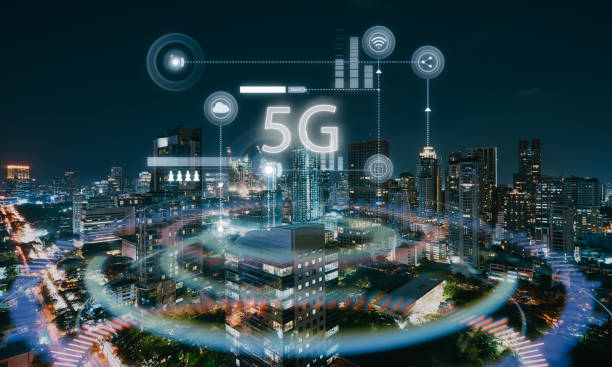The arrival of 5G technology is more than just faster internet on your phone—it’s a game-changer for emerging tech like Augmented Reality (AR) and the Internet of Things (IoT). By offering lightning-fast speeds, ultra-low latency, and massive connectivity, 5G is unlocking possibilities that were once only imagined in science fiction.
In this article, we’ll explore how 5G is powering the next wave of AR and IoT devices, transforming industries and everyday life.
What Makes 5G Different?
Unlike previous generations, 5G networks deliver:
- Gigabit speeds—up to 100 times faster than 4G
- Latency as low as 1 millisecond for near-instantaneous response
- Support for millions of connected devices per square kilometer
- Improved reliability and energy efficiency
These features create the perfect environment for data-intensive, real-time applications like AR and IoT.
5G and Augmented Reality: A Perfect Match
AR overlays digital information onto the real world, used in gaming, education, healthcare, and retail.
How 5G Enhances AR:
- Real-time interactions: Low latency means AR content responds instantly to user movements.
- High-quality visuals: Faster speeds support streaming of rich, detailed 3D images without lag.
- Mobile AR: 5G enables seamless AR experiences on smartphones and wearables anywhere.
Imagine doctors performing remote surgeries with precise AR guidance or shoppers virtually trying on clothes without delays—that’s the power of 5G-enabled AR.
5G and IoT: Connecting Everything
IoT connects everyday objects—from home appliances to industrial sensors—allowing them to collect and exchange data.
Why 5G is Critical for IoT:
- Massive device connectivity: 5G networks can support billions of IoT devices simultaneously.
- Energy efficiency: Longer battery life for IoT sensors and devices thanks to optimized 5G protocols.
- Improved security: Enhanced encryption and network slicing protect IoT data streams.
Smart cities, connected cars, and automated factories all rely on 5G to operate smoothly and efficiently.
Industries Transformed by 5G-Powered AR and IoT
- Healthcare: Remote patient monitoring using IoT devices combined with AR for diagnostics.
- Manufacturing: Smart factories using IoT sensors for real-time machine data and AR for worker training.
- Retail: AR-powered shopping experiences and IoT inventory tracking for better supply chain management.
- Transportation: Connected vehicles communicating in real-time for safer roads.
Challenges and the Road Ahead
While 5G is promising, widespread adoption faces challenges:
- Infrastructure build-out: Rolling out 5G networks, especially in rural areas, requires investment.
- Device compatibility: Older AR and IoT devices may need upgrades to leverage 5G.
- Privacy concerns: More connected devices mean more data to protect.
Despite these hurdles, the momentum behind 5G technology continues to grow, with innovations accelerating every year.
Final Thoughts
5G is more than a faster network—it’s the foundation for the next generation of AR and IoT devices that will redefine how we live, work, and interact with technology. By enabling real-time, high-quality connections among countless devices, 5G is powering a smarter, more connected future.
Whether it’s enhancing immersive AR experiences or enabling intelligent IoT ecosystems, 5G is set to be the backbone of tomorrow’s tech revolution.

